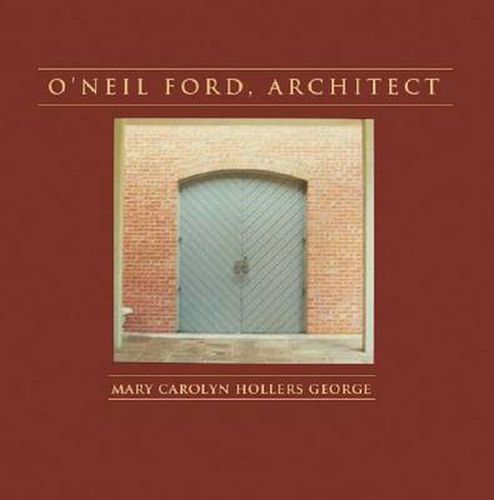Readings Newsletter
Become a Readings Member to make your shopping experience even easier.
Sign in or sign up for free!
You’re not far away from qualifying for FREE standard shipping within Australia
You’ve qualified for FREE standard shipping within Australia
The cart is loading…






Himself designated a National Historical Landmark by the National Council on the Arts, O'Neil Ford with his associates designed some of the most famous architectural landmarks in Texas and elsewhere in the nation: the Texas Instruments Semiconductor Building in Dallas, the Little Chapel in the Woods at Texas Woman’s University, campuses of the University of Texas at San Antonio, Skidmore College in New York, and Trinity University, San Antonio. The list of credits goes on and on for this remarkable architect who brought an indigenous Southwestern flair to homes, public buildings, and businesses. From the mid-1930s until his death in 1982, Ford was a pied piper for young architects, and the message he piped was always the same: sensitivity to the nature of materials the earth provided; concern for timelessness and the performance of a building over the long haul; adaptability to changing needs; and innovative approaches to budgetary constraints. In short, he advocated and practiced the building of structures that are expressions of something real and lasting. With 36 full-color photographs and 124 black-and-white pictures, this volumes lavishly illustrates his vision and his legacy.
O'Neil Ford was controversial, paradoxical, contradictory. No one who knew him or his work was lukewarm about him. Nor was he lukewarm about others. In his world there were only heroes and villains; the villains were the vulgarians. Ford, long considered a leader of the Modern movement in the Southwest, was grieved by the concept of architecture as a product of superficial fashion with current vocabularies and design by stylish formulae. Now, in the post-Post-Modern epoch, his words again ring fresh and true, and his culturally well-grounded architecture inspires anew.
Through extensive interviews with Ford and scores of others and using Ford’s diaries (1951-82), Mary Carolyn Hollers George has traced Ford’s life and work, as well as the cast of characters who peopled his world. His close, and eventually prominent, friends contributed immensely not only to his own development but to the artistic milieu of a budding Southwestern regionalism. Also part of the mix were the young architects who flowed through Ford’s office, being inculcated with his ways of of dealing with materials and his belief in the unity of structural and architectural forms, and who are still influencing the design understandings of today.
$9.00 standard shipping within Australia
FREE standard shipping within Australia for orders over $100.00
Express & International shipping calculated at checkout
Himself designated a National Historical Landmark by the National Council on the Arts, O'Neil Ford with his associates designed some of the most famous architectural landmarks in Texas and elsewhere in the nation: the Texas Instruments Semiconductor Building in Dallas, the Little Chapel in the Woods at Texas Woman’s University, campuses of the University of Texas at San Antonio, Skidmore College in New York, and Trinity University, San Antonio. The list of credits goes on and on for this remarkable architect who brought an indigenous Southwestern flair to homes, public buildings, and businesses. From the mid-1930s until his death in 1982, Ford was a pied piper for young architects, and the message he piped was always the same: sensitivity to the nature of materials the earth provided; concern for timelessness and the performance of a building over the long haul; adaptability to changing needs; and innovative approaches to budgetary constraints. In short, he advocated and practiced the building of structures that are expressions of something real and lasting. With 36 full-color photographs and 124 black-and-white pictures, this volumes lavishly illustrates his vision and his legacy.
O'Neil Ford was controversial, paradoxical, contradictory. No one who knew him or his work was lukewarm about him. Nor was he lukewarm about others. In his world there were only heroes and villains; the villains were the vulgarians. Ford, long considered a leader of the Modern movement in the Southwest, was grieved by the concept of architecture as a product of superficial fashion with current vocabularies and design by stylish formulae. Now, in the post-Post-Modern epoch, his words again ring fresh and true, and his culturally well-grounded architecture inspires anew.
Through extensive interviews with Ford and scores of others and using Ford’s diaries (1951-82), Mary Carolyn Hollers George has traced Ford’s life and work, as well as the cast of characters who peopled his world. His close, and eventually prominent, friends contributed immensely not only to his own development but to the artistic milieu of a budding Southwestern regionalism. Also part of the mix were the young architects who flowed through Ford’s office, being inculcated with his ways of of dealing with materials and his belief in the unity of structural and architectural forms, and who are still influencing the design understandings of today.